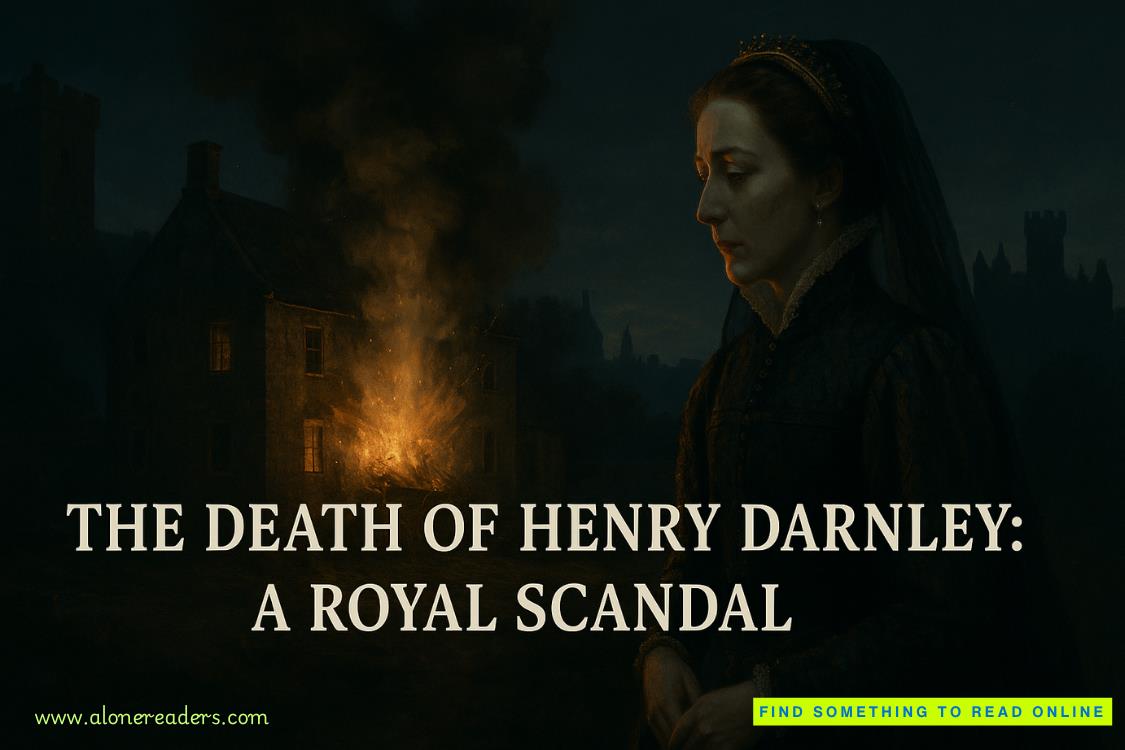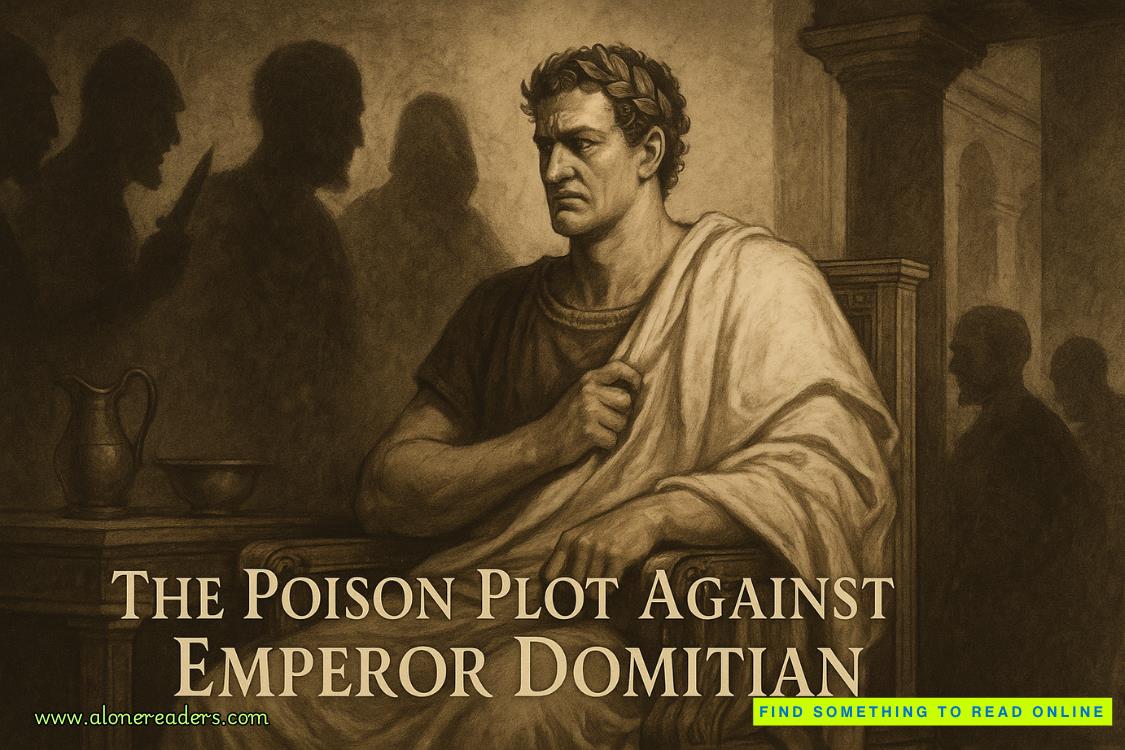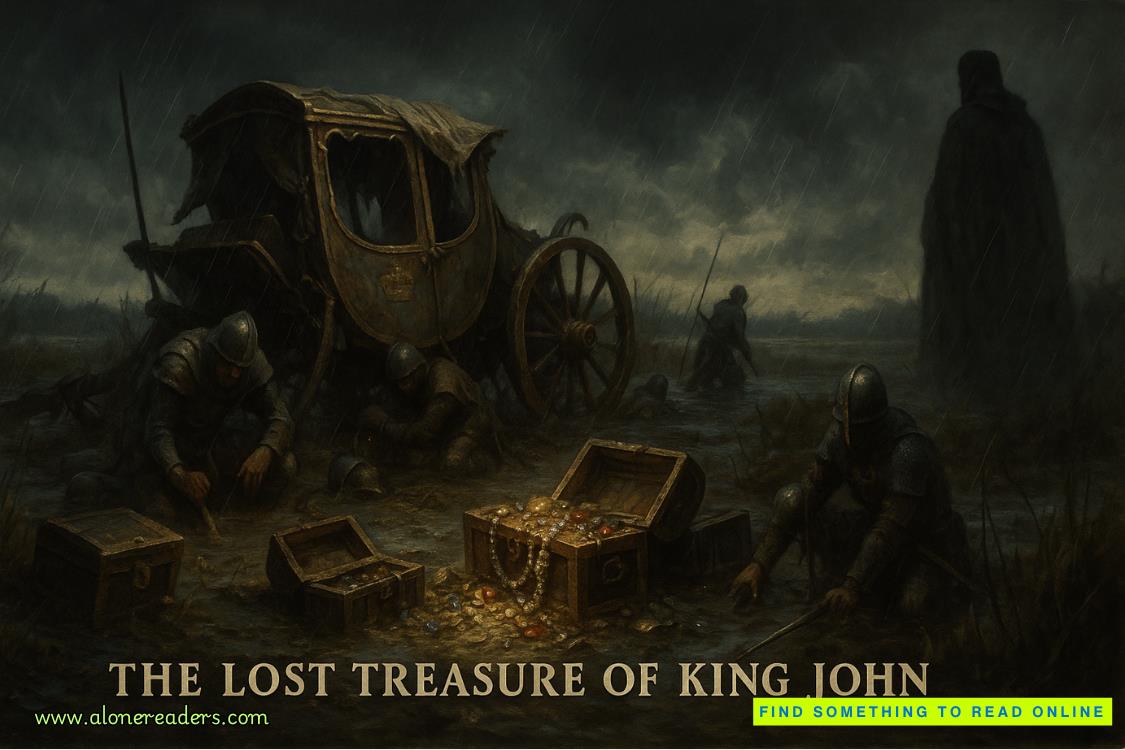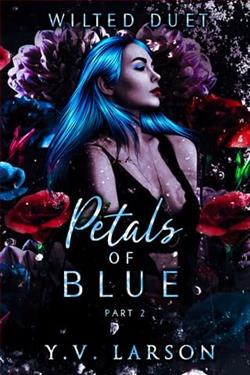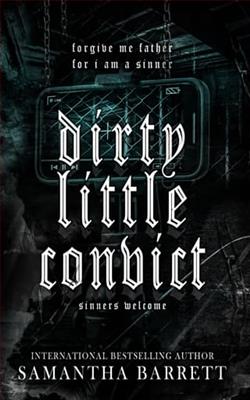Page 69 of Crucible of Chaos
Ritual, he wanted to tell her.This place is no longer governed by the laws of humanity or nature, but by those of faith, devilry and ceremony.It was on that unsteady terrain where Estevar would face his final duel. He would make one last attempt to prove that not even supernatural forces could defy the laws he’d come to worship more than any god.
Caeda watched him, longing for the answer to the mystery that had puzzled the two of them for so long, yet not ready for the terrible ending that truth would demand of them both.
He reached out and placed a palm against her cheek. Her skin was so warm, so full of—
‘We ring the bell so they will all hear, my Piccolo,’ he announced, forcing his unwilling back to straighten, the sagging corners of his mouth to rise into a defiant smile, and above all else, his eyes not to shed tears, but meet hers, as one Greatcoat to another. ‘We ring the bell so that everything that walks upon the island of Isola Sombra will know the trial has come to an end, and that Estevar Valejan Duerisi Borros, the King’s Crucible, is about to render his verdict.’
PART THE EIGHTH
THE SIGILS OF AWAKENING
Where have gone the days when prayers charged forth like knights to battle? Faithful voices go unheard, as above, so below, and now our curses hold no sway against their schemes and steel. We who serve the gods are told they are dead and well-buried. Have the strong cast aside their swords? Have the wealthy rejected their riches? Why should those of us whose only power is prayer walk quietly into oblivion while others continue to chart the course of this nation?
I have found the sigils. I have offered the sacrifice.
I have chosen our future.
Judge me without mercy, Eminence.
CHAPTER 39
THE INFERNAL ART
Years ago, Estevar had travelled his adopted country, investigating reports of a painting so horrifying to behold that even the slightest of glances plunged the unwary into the very depths of madness. Those unlucky fools clawed out their own eyes, it was said, and tore out the throats of any who tried to stop them. The accounts sounded unbelievable, and chasing down rumours of the infernal artwork’s location soon became a game of cat and mouse. He found many graves of alleged victims, yet the mythical painting itself was nowhere to be found.
So Estevar sought out the blind artist believed to have painted the deadly masterpiece and was surprised not only to find the man still alive, but swearing on his soul that the tales told of his dreadful creation were true. Although he gave his age as twenty-nine, his sparse hair was grey, his skin paper-thin and covered with liver spots, and only a few of his teeth remained.
The artist told Estevar that a dying viscount had commissioned the painting. Fearing that his manifold sins in life would condemn him in death, the eccentric nobleman wished to spend his last days gazing upon an image of Hell as accurate as possible, to better prepare himself for the eternal torments to be visited upon him. The artist, intrigued by the outlandish commission, turned his hand to rendering every vision of damnation imaginable.
He spent a great deal of time and a fortune of his client’s money in research, acquiring banned books of heretical theology, performing bizarre rituals and imbibing every hallucinogenic narcotic he could find. For months he gave himself over to the unholy endeavour, but never succeeded in producing anything but maudlin portraits of childish nightmares. Gallons of expensive paints were wasted, dozens of canvases tossed in the fire, until, falling into a bitter rage, he placed one of his older, most prized works upon the easel and set about ruining it, entirely out of spite. He told Estevar that his brush moved of its own accord, the new pigments mingling with the old, distorting and debasing the original work– and with each desecrating stroke, the painting took on an ever-more-hideous aspect until, at last, the artist knew his purpose had been achieved. He had painted Hell.
It was the last thing he saw before his sight failed him, never to return.
The painting disappeared from his workshop shortly thereafter, and the viscount was forced to begin his final journey without a map to his destination.
‘Do you recall anything of the finished image?’ Estevar had asked– and the artist had surprised him by describing every inch of the canvas in painstaking detail,his recounting so vivid and unnerving that Estevar suffered from nightmares for an entire year. He was ashamed of being so grateful he had not found the original, and after the nightmares subsided, he had reassured himself that logic dictated that the painting had never actually existed; the artist, deranged or simply duplicitous, had concocted the entire tale to add to his own notoriety.
Now, stepping beneath the stone arch into the courtyard of Isola Sombra once more, Estevar could not deny the evidence of his own eyes. The artist had spoken truthfully that day, and whether through mysticism or madness, had given Hell the most faithful of renderings.
‘Saint Ethalia-who-shares-all-sorrows,’ Estevar whispered, though he couldn’t hear himself speak over the cries of torment.
‘The denizens of the infernal lands do not act out of rage,’ the blind artist had warned him years ago. ‘The cruelty of evil lies in its perverse innocence. Vengeance and torment are trivial things to them; they desire only to. . . play.’
As with the demons he’d seen two days before, these creatures were pale, sickly things, their leathery skin textured with subtle variations of the sigils from theSacrificia Purgadis. Their gleaming eyes were the blue found on the veins of bloated corpses pulled from the water after a shipwreck. The only difference was that there were more of them now, and instead of only one victim, these were gleefully slaughtering every soul they could pull screaming from inside the abbey.
One of the monsters stood upon the roof of the cloister, dangling a monk by his ankle, while a second demon standing on distended tiptoes pushed its unnaturally long split tongue into both of the wailing man’s eyes.
Another of the creatures, this one with sharp spines all over its chest and the inside of its arms, was chasing one of the brothers like a lover hungering for an affectionate embrace.
Two demons, taller than the rest, held a third with a corkscrew goat’s horn protruding from the centre of its forehead upside down and were turning his body round and round as his horn burrowed into the chest of a spasming, dying monk.
Most horrifying of all was a hornless creature who could have been confused with an ordinary, pale-skinned youth, save that he was prying his own jaws apart, wide enough to encompass the head of a monk whose hands were clasped in futile prayer.
Everywhere was the stench of decay, with sewer water gushing up through the storm grates to swamp the ground. Some of the demons were splashing their feet in it, kicking foetid lumps of dung into the air, smothering the courtyard in filth. Men and women in torn robes were no longer crying to their gods for reprieve but for a quick death.
Each time one of the demons granted that wish, they would devour their victim, grunting with feral abandon, then run– on two legs or four– to the centre of the ruined statuary, there to regurgitate blood and bone onto that once-hallowed ground.
‘Why are they doing that?’ Caeda asked, clutching the hatchet she’d taken from a woodpile outside the gates. ‘What purpose does it serve to defile the holiest part of the abbey?’





